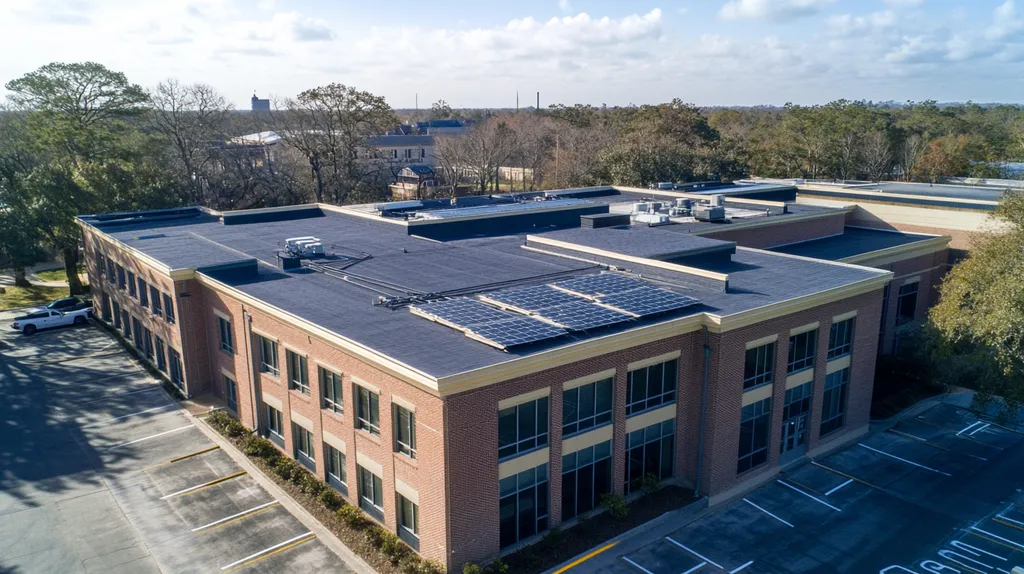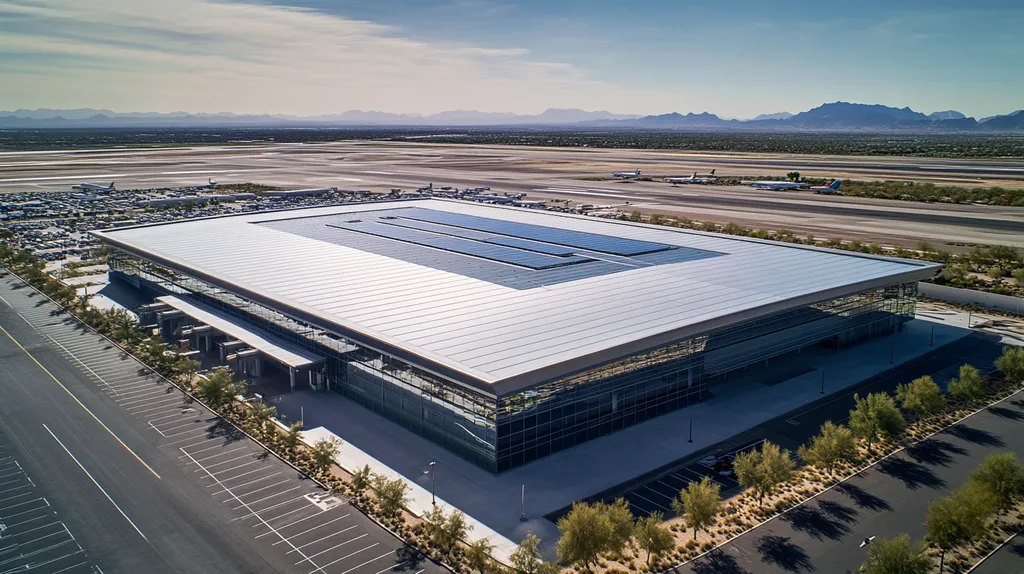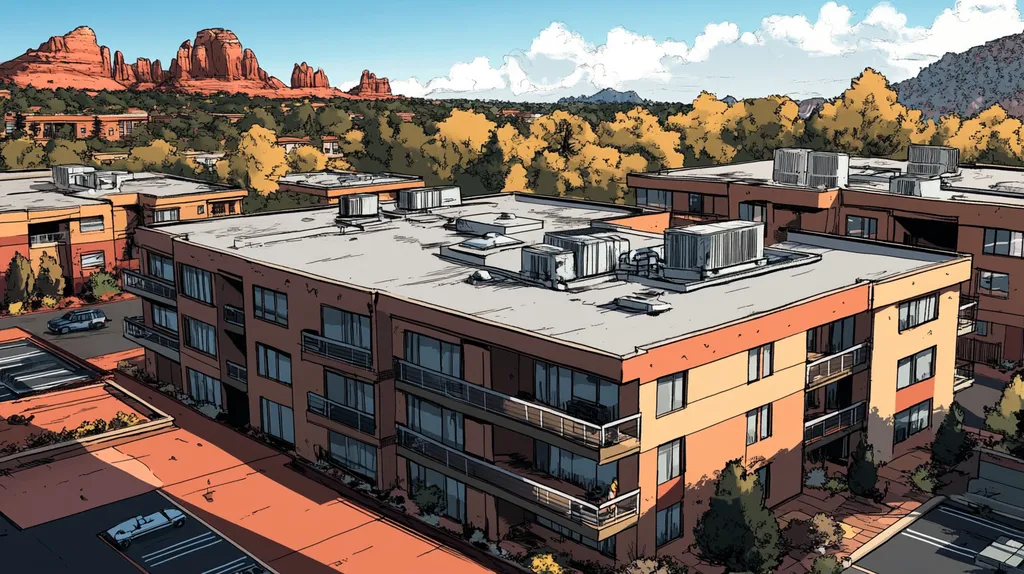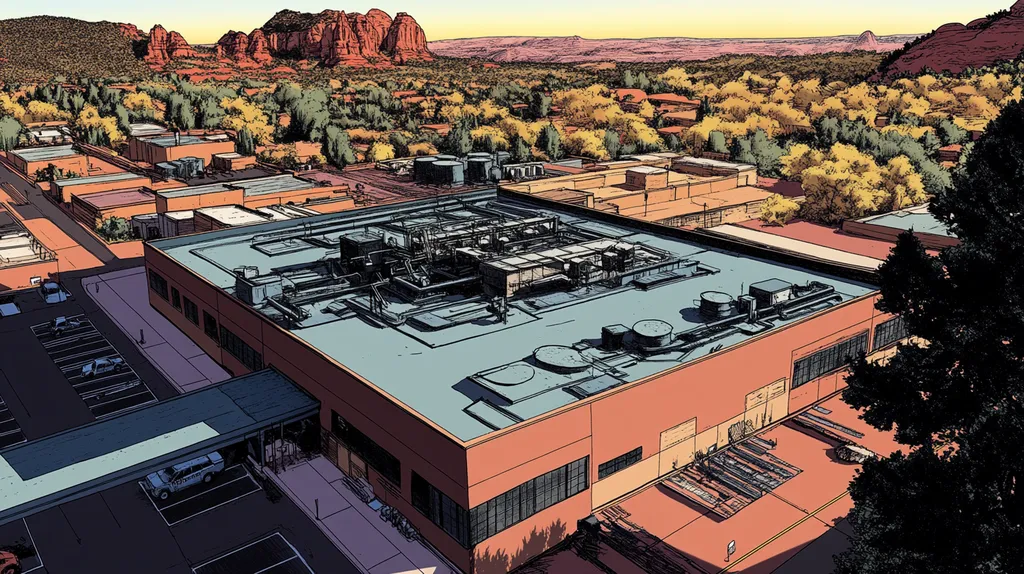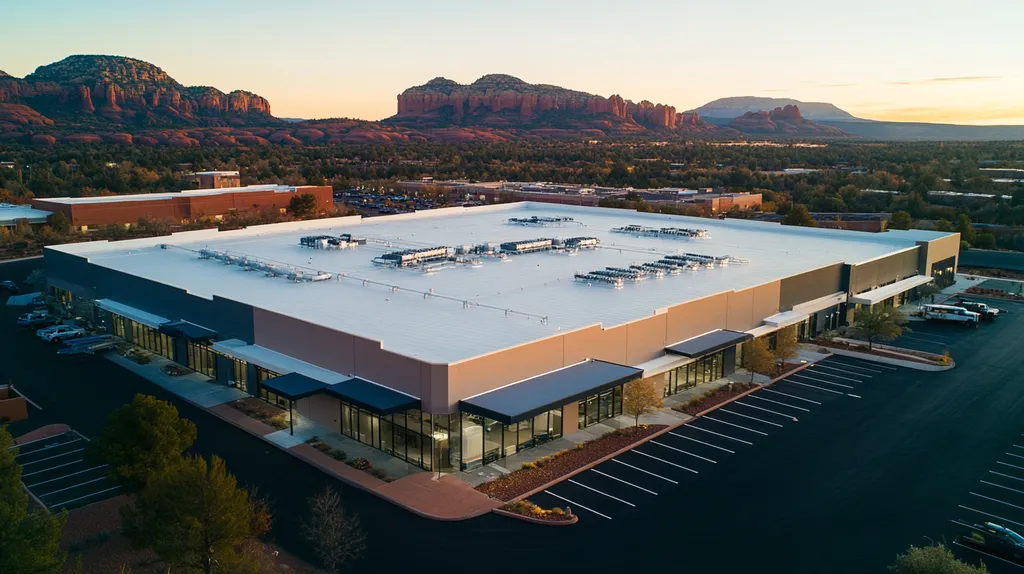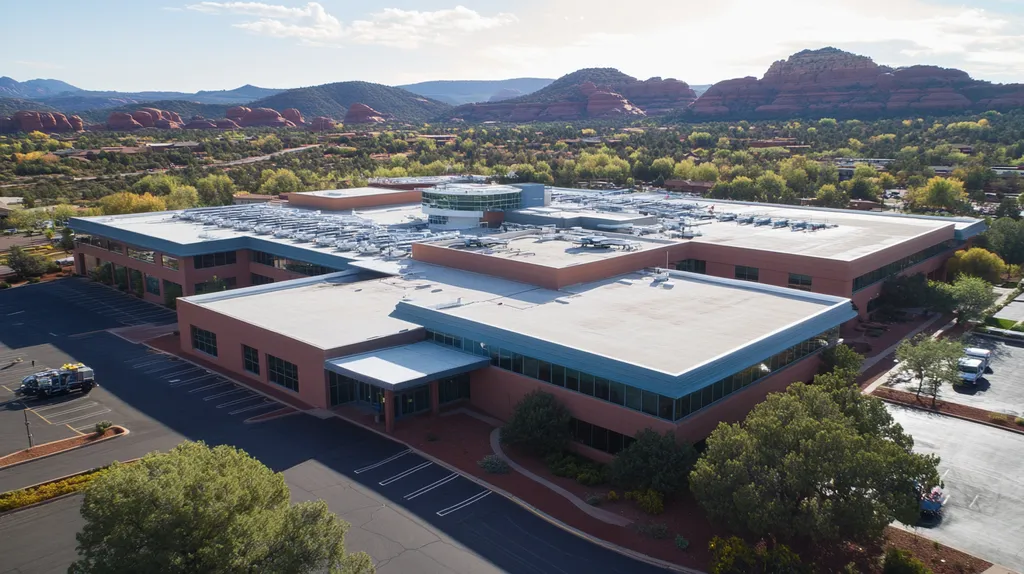In an era of increasingly severe weather, commercial roofs face unprecedented challenges. Industry data shows storm-related roof damage has surged 65% since 2018, with average repair costs now exceeding $250,000 per incident.
Selecting the right roofing materials has become critical for protecting commercial investments. Modern systems must withstand 150+ mph winds, baseball-sized hail, and torrential rains while maintaining structural integrity.
This comprehensive guide examines the essential components, installation methods, and maintenance strategies that create storm-resistant commercial roofing systems proven to protect facilities through extreme weather events.
SECTION 1: FUNDAMENTAL CONCEPTS
When severe weather strikes, your commercial roof becomes the primary shield protecting millions in assets and operations. Recent climate data shows storms are becoming more frequent and intense, with commercial roof damage claims rising 28% over the past decade. Understanding how different forces affect roofing systems and selecting appropriate materials isn’t just about preventing leaks – it’s about safeguarding your entire business investment.
Storm Forces: Wind, Hail, and Rain Impact Mechanics
Wind represents the most dynamic threat to commercial roofs, creating complex pressure patterns that can literally peel materials away from the structure. The higher your building, the greater these uplift forces become, particularly at corners and edges where wind acceleration is strongest.
Hail presents a different challenge, delivering concentrated impact force that can crack, dent, or puncture roofing materials. Even small hailstones can create microscopic damage that compounds over time, eventually compromising your roof’s waterproof integrity.
Rain damage occurs through multiple mechanisms. Beyond direct water infiltration, prolonged exposure can lead to material degradation, while poor drainage creates ponding that can add thousands of pounds of extra weight to your roof structure.
Material Properties Critical for Storm Resistance
Modern roofing materials must meet specific performance standards to ensure adequate storm protection. For optimal protection, flat and low-sloped roofs should meet FM Approvals Standard 4470 with Class 1-SH rating, while steep-sloped roofs require UL 2218 Class 4 certification. (source: Insurance Institute for Business & Home Safety)
Impact resistance represents a critical material property, particularly in hail-prone regions. Materials rated Class 4 for impact resistance can withstand repeated strikes from two-inch diameter steel balls, simulating severe hail conditions.
Tensile strength and tear resistance determine how well materials resist wind forces. Premium-grade modified bitumen and thermoplastic membranes offer superior performance in these categories, maintaining integrity even under extreme conditions.
Chemical stability ensures materials maintain their protective properties over time. UV-resistant compounds and specialized coatings prevent degradation from sun exposure, while advanced polymers resist breakdown from repeated freeze-thaw cycles.
Roof Design Principles for Severe Weather Durability
Effective storm resistance starts with proper slope design and drainage planning. Even minimal slopes of 1/4 inch per foot can dramatically improve water management, while properly sized and placed drains prevent destructive ponding.
Edge detail design proves crucial for wind resistance. Enhanced perimeter fastening patterns, metal edge systems, and corner reinforcement help maintain roof integrity where wind forces are strongest.
Strategic material layering creates redundant protection against water infiltration. Proper overlap of materials, particularly at transitions and penetrations, ensures water follows the intended path off your roof rather than finding ways inside.
Structural attachment methods must account for both static and dynamic loads. Using appropriate fastener patterns, adhesive systems, and mechanical attachments ensures your roof stays in place during severe weather events.
SECTION 2: SYSTEM COMPONENTS
Every year, commercial roofs face increasingly severe weather challenges that test their structural integrity. Recent data shows storm-related roof damage has increased by 65% in the last five years, with repair costs averaging $250,000 per incident. Understanding and selecting the right combination of roofing components isn’t just about preventing leaks – it’s about protecting your entire building investment during extreme weather events.
Storm-Resistant Roofing Materials Overview
Modern commercial roofing requires materials engineered specifically for extreme weather conditions. Premium-grade TPO and PVC membranes offer superior wind resistance and maintain flexibility even during dramatic temperature swings, making them ideal for storm-prone regions.
Modified bitumen systems provide excellent impact resistance through their multi-layer construction. The reinforced core and granulated surface create a durable barrier that can withstand repeated hail impacts and intense UV exposure.
Metal roofing systems, when properly engineered, excel in high-wind environments. Interlocking panels and concealed fastener systems create a continuous barrier that resists wind uplift forces while channeling water efficiently.
For optimal storm protection, roofing materials should meet FM Approvals Standard 4470 with Class 1-SH rating for flat and low-sloped applications, while steep-sloped installations require UL 2218 Class 4 certification. (source: Insurance Institute for Business & Home Safety)
Critical Flashings, Sealants, and Fasteners
Flashings represent the most vulnerable points in any roofing system during storms. Heavy-gauge metal flashings with proper overlap and mechanical attachment prevent water infiltration at transitions and penetrations.
Storm-grade sealants must maintain flexibility across extreme temperature ranges. High-performance polyurethane and silicone formulations create lasting bonds that accommodate building movement while resisting UV degradation.
Enhanced fastening patterns are crucial for storm resistance, particularly at roof perimeters and corners. Corrosion-resistant fasteners with oversized plates distribute wind loads more effectively across the roofing assembly.
Termination bars and edge metal systems provide critical reinforcement where wind forces are strongest. These components must be properly engineered and installed to prevent progressive failure during severe weather.
Membranes and Insulation for Weather Protection
Multi-layer membrane systems offer redundant protection against water infiltration. Reinforced membranes with heat-welded seams create monolithic coverage that resists tearing and maintains watertight integrity during high winds.
High-density cover boards protect underlying insulation from impact damage and provide a stable substrate for membrane attachment. This layer significantly improves the system’s resistance to hail and foot traffic.
Proper insulation not only improves energy efficiency but also contributes to system durability. Moisture-resistant foam insulations maintain their R-value and structural integrity even when exposed to extreme temperature cycles.
Vapor barriers and air seals prevent condensation and air infiltration that can compromise system performance. These components are especially critical in humid climates where moisture control affects long-term durability.
SECTION 3: IMPLEMENTATION METHODS
Storm resilience in commercial roofing depends heavily on proper installation methods and system integration. Recent studies show that 80% of roof failures during severe weather events stem from improper installation rather than material defects. With wind speeds in many regions reaching new records each year, implementing the right techniques and ensuring complete system integration has never been more critical for protecting commercial investments.
Best Practices in Roof Material Installation
Success begins with thorough substrate preparation and appropriate material handling. All surfaces must be clean, dry, and properly prepared to ensure optimal adhesion and system performance. Temperature and humidity monitoring during installation is crucial, as these factors significantly affect material behavior and bond strength.
Quality control measures should include regular seam testing and inspection of critical details throughout the installation process. Implementing a systematic approach to quality assurance helps identify and address potential issues before they become major problems.
Proper sequencing of installation steps ensures that each component properly integrates with adjacent materials. This is particularly important around penetrations, corners, and other critical transition points where multiple materials come together.
Documentation of installation procedures, including photos and detailed notes, provides valuable reference points for future maintenance and helps verify that all specifications were followed correctly.
Advanced Fastening Techniques for Wind Uplift
Metal roofing systems demonstrate superior wind resistance when properly secured, thanks to features like concealed fasteners and robust attachment systems. The key lies in understanding and implementing appropriate fastening patterns based on specific wind zone requirements.
Enhanced perimeter and corner fastening patterns provide crucial reinforcement where wind forces are most intense. These areas typically require up to 60% more fasteners than field areas to maintain system integrity during severe weather.
Proper fastener selection and installation depth are critical for long-term performance. Using fasteners with superior pull-out resistance and ensuring correct embedment depth significantly improves wind uplift resistance. (source: DECRA)
Regular inspection and maintenance of fastening systems help prevent progressive failure during high-wind events. This includes checking for signs of backing out, corrosion, or other potential weaknesses that could compromise system integrity.
Integration of Roof Components for System Integrity
Successful storm resistance requires treating the roof as a complete system rather than individual components. Each element must work in concert with adjacent materials to create a continuous barrier against wind, water, and impact forces.
Proper integration of vapor barriers, insulation, and membrane layers creates a robust assembly that can better resist storm forces. This includes careful attention to overlap requirements and proper sealing at all transitions.
Drainage components require particular attention during integration to prevent water backup during heavy rains. Ensuring proper slope and adequate drain capacity helps prevent ponding that can compromise system integrity.
Regular system evaluations should assess how well components work together under stress. This includes checking for separation between layers, membrane attachment integrity, and proper function of expansion joints.
SECTION 4: MAINTENANCE REQUIREMENTS
Regular maintenance stands as the crucial difference between a roof that fails during storms and one that provides decades of protection. Industry data shows that up to 90% of premature roof failures stem from inadequate maintenance, while properly maintained systems routinely exceed their expected lifespan by 5-10 years. For commercial property owners, implementing a comprehensive maintenance strategy isn’t just about preventing leaks – it’s about protecting millions in assets and ensuring business continuity through severe weather events.
Scheduled Inspections and Damage Assessment
Professional roof inspections should occur at minimum twice annually – typically in spring and fall – with additional assessments after any severe weather event. These evaluations must cover not just the roof surface, but all components including flashings, drainage systems, and mechanical attachments.
Documentation plays a vital role in tracking roof performance over time. Digital imaging, thermal scanning, and detailed condition reports create a comprehensive record that helps identify developing issues before they become critical failures.
Special attention must focus on high-stress areas like corners, edges, and around rooftop equipment where wind and water damage typically begin. These zones require more frequent inspection and often show the first signs of potential system failure.
Modern inspection protocols now incorporate drone technology and infrared scanning to detect hidden moisture infiltration and structural weaknesses that might compromise storm resistance.
Repair Protocols for Storm-Related Roof Damage
When storm damage occurs, rapid response becomes critical to preventing cascading failures throughout the roofing system. Property managers should maintain an emergency response plan that includes immediate temporary repairs and coordinates with qualified contractors for permanent solutions.
Metal roofing systems demonstrate exceptional durability during storms but require specialized repair approaches to maintain their protective capabilities. (source: Watertight Roofing)
Repairs must address not just visible damage but also investigate and remedy underlying conditions that may have contributed to the failure. This includes evaluating attachment systems, substrate condition, and drainage patterns.
Quality control during repairs proves essential for maintaining long-term system integrity. All repair materials must match or exceed the performance characteristics of the original roofing system while maintaining compatibility with existing components.
Preventive Maintenance to Extend Storm Resilience
Proactive maintenance strategies significantly reduce the risk of storm-related failures while extending overall system lifespan. Regular cleaning of drainage systems, removal of debris, and inspection of sealants prevent many common failure points before they develop.
Surface treatments and protective coatings can dramatically improve weather resistance when properly maintained. These systems require periodic reapplication and inspection to ensure continued effectiveness against UV exposure and moisture infiltration.
Building movement and thermal cycling create ongoing stress on roofing systems. Regular evaluation and maintenance of expansion joints, control joints, and transition details helps prevent storm-related failures at these critical points.
Mechanical equipment maintenance directly impacts roof performance during storms. Proper servicing of HVAC units, solar installations, and other rooftop equipment prevents damage to the roofing system during severe weather events.
SECTION 5: PERFORMANCE METRICS
Performance metrics serve as the essential framework for evaluating a commercial roof’s storm resilience. Recent industry analysis reveals that 73% of catastrophic roof failures could have been prevented through proper understanding and application of key performance standards. For facility managers, these metrics aren’t just technical specifications – they represent the difference between a roof that protects valuable assets and one that fails when protection matters most.
Wind Uplift and Impact Resistance Standards
Wind uplift ratings determine a roof’s ability to remain intact during severe storms. Modern testing protocols simulate real-world conditions, measuring both sustained wind resistance and resistance to sudden gusts that can create devastating pressure differentials.
Impact resistance testing evaluates how roofing materials withstand the punishment of hail and wind-driven debris. UL 2218 focuses on testing flexible roofing materials with steel balls, while FM 4473 uses ice spheres to simulate hailstones for rigid materials like metal and slate. (source: Blueteamcorp)
Performance classifications range from Class 1 to Class 4, with Class 4 materials offering maximum protection. These ratings directly correlate to insurance premiums and long-term maintenance costs, making them crucial factors in material selection.
Edge and corner zones require enhanced testing protocols due to increased wind forces. Materials must demonstrate superior attachment strength and resistance to progressive failure in these critical areas.
Water Intrusion and Drainage Efficiency Measures
Water management capabilities represent a critical performance metric for commercial roofing systems. Modern testing methods measure both static water resistance and dynamic water infiltration under storm conditions.
Drainage efficiency ratings evaluate how quickly water moves off the roof surface. These measurements account for factors like slope, membrane texture, and drain placement to ensure proper water evacuation during heavy rainfall.
Seam strength testing verifies watertight integrity under sustained hydrostatic pressure. This becomes particularly important at material transitions and penetrations where water infiltration commonly begins.
Advanced moisture detection protocols now utilize electromagnetic and infrared testing to verify system performance. These methods can identify potential water intrusion points before visible damage occurs.
Longevity and Warranty Benchmarks for Materials
Material longevity metrics provide crucial data for lifecycle cost analysis. Performance testing under accelerated aging conditions helps predict how materials will withstand repeated storm exposure over decades of service.
Warranty terms serve as key indicators of expected performance levels. Premium materials typically offer coverage ranging from 20 to 30 years, with specific provisions for wind speed resistance and impact damage.
Environmental exposure ratings measure resistance to UV degradation, thermal cycling, and chemical exposure. These factors significantly impact how well materials maintain their protective properties over time.
System compatibility testing ensures all components work together effectively throughout the warranty period. This includes evaluation of adhesives, sealants, and mechanical fasteners under various weather conditions.
SECTION 6: OPTIMIZATION STRATEGIES
Storm-related roof damage costs U.S. businesses over $6 billion annually in repairs and lost productivity. While 70% of commercial roofs remain underprotected against severe weather, implementing the right optimization strategies can dramatically improve storm resilience. Modern approaches combining material science, regional climate analysis, and emerging technologies now offer property owners unprecedented opportunities to enhance their roofing systems’ protective capabilities.
Upgrading Existing Roofs for Storm Resistance
Commercial property owners can significantly enhance storm protection without complete roof replacement. Strategic upgrades focusing on known vulnerability points often deliver the highest return on investment, particularly around perimeters and penetrations where most failures begin.
Reinforcing edge systems provides immediate improvement in wind resistance. Enhanced attachment patterns, stronger edge metal, and additional fasteners at corners create a more robust barrier against wind uplift forces.
Adding high-performance roof coatings extends system longevity while improving weather resistance. These materials can increase UV protection, enhance water resistance, and provide an additional layer of impact protection.
Modern drainage modifications help prevent water accumulation during intense storms. Increasing drain capacity, adding overflow scuppers, and improving slope with tapered insulation systems significantly reduce the risk of collapse under heavy rainfall.
Selecting Materials Based on Regional Climate Risks
Wind resistance represents a critical consideration in material selection, with standardized ratings now available for most commercial roofing products. Premium materials can resist uplift forces at wind speeds up to 150 mph when properly installed according to ASTM D7158 standards. (source: Owens Corning Roofing)
Coastal regions require materials with superior corrosion resistance and UV stability. Specialized PVC membranes and high-grade metal roofing systems offer enhanced protection against salt spray and intense sun exposure.
Areas prone to frequent hailstorms benefit from impact-resistant modified bitumen or reinforced single-ply systems. These materials maintain their protective properties even after repeated impact events.
Regions experiencing extreme temperature swings need materials with excellent thermal stability. Advanced polymer formulations help prevent cracking and splitting through countless freeze-thaw cycles.
Incorporating Technological Innovations for Durability
Smart monitoring systems now provide real-time data on roof condition and performance. Embedded sensors track moisture levels, detect membrane separation, and alert facility managers to potential problems before they become critical failures.
Advanced adhesive technologies create stronger bonds between roofing components. New formulations maintain flexibility while providing superior wind resistance and preventing delamination during severe weather.
Automated drainage management systems adjust to changing weather conditions. Electronic monitors regulate flow rates and prevent backup during intense storms, while alerting maintenance teams to potential blockages.
Predictive maintenance software helps optimize inspection and repair schedules. These programs analyze weather patterns and roof condition data to identify when and where preventive measures will be most effective.
The Bottom Line
With storm-related commercial roof damage increasing 65% since 2018 and repair costs now averaging $250,000 per incident, selecting appropriate roofing materials has become critical for business continuity.
Modern roofing systems must integrate premium materials, advanced installation techniques, and proactive maintenance strategies to withstand increasingly severe weather events.
The most effective storm-resistant systems combine Class 4 impact-rated materials, enhanced wind uplift protection, and intelligent monitoring technology to provide comprehensive facility protection.
Property owners who implement these proven strategies while following established performance metrics can expect their roofing systems to maintain structural integrity through extreme weather, protecting millions in assets and operations.
The future of commercial roofing lies in this systematic approach to storm resistance, where every component and practice works together to create lasting protection.
FREQUENTLY ASKED QUESTIONS
Q. How does storm damage affect a commercial roof’s performance?
A. Storms create physical forces that can compromise your roof’s structure, leading to leaks and significant damage. Understanding these forces helps in selecting appropriate materials that can withstand harsh conditions, ultimately protecting your investment.
Q. What materials are most effective for an industrial roof in severe weather?
A. Premium-grade TPO and PVC membranes are highly effective for industrial roofs, offering excellent wind and impact resistance. Modified bitumen systems are also strong contenders due to their multi-layer construction that enhances durability and performance against harsh weather.
Q. Why is proper installation critical for a commercial roof?
A. Proper installation is key to ensuring the roof can withstand storm-related stresses. In fact, most roof failures during severe weather are caused by installation issues rather than material defects. Applying the right techniques ensures everything works together effectively.
Q. How often should I inspect my commercial roof?
A. It’s recommended to conduct professional inspections at least twice a year, ideally in spring and fall. Additional checks should occur after severe weather to assess any potential damage and ensure ongoing protection for your property.
Q. What are the key performance metrics for commercial roofing materials?
A. Key metrics include wind uplift resistance, impact resistance, and water intrusion performance. Understanding these factors helps facility managers choose materials that not only meet building codes but also provide long-lasting storm protection.
Q. How can I upgrade my existing roof for better storm resistance?
A. Consider reinforcing edge systems, applying high-performance roof coatings, or improving drainage capacities. These strategic upgrades can enhance storm resistance without requiring a full roof replacement, providing better protection against severe weather.
Q. What innovative technologies can improve my commercial roof’s performance?
A. Smart monitoring systems, advanced adhesive technologies, and automated drainage management can significantly boost roof performance. These innovations provide real-time data and enhance the overall resilience of your roofing system during extreme weather events.

